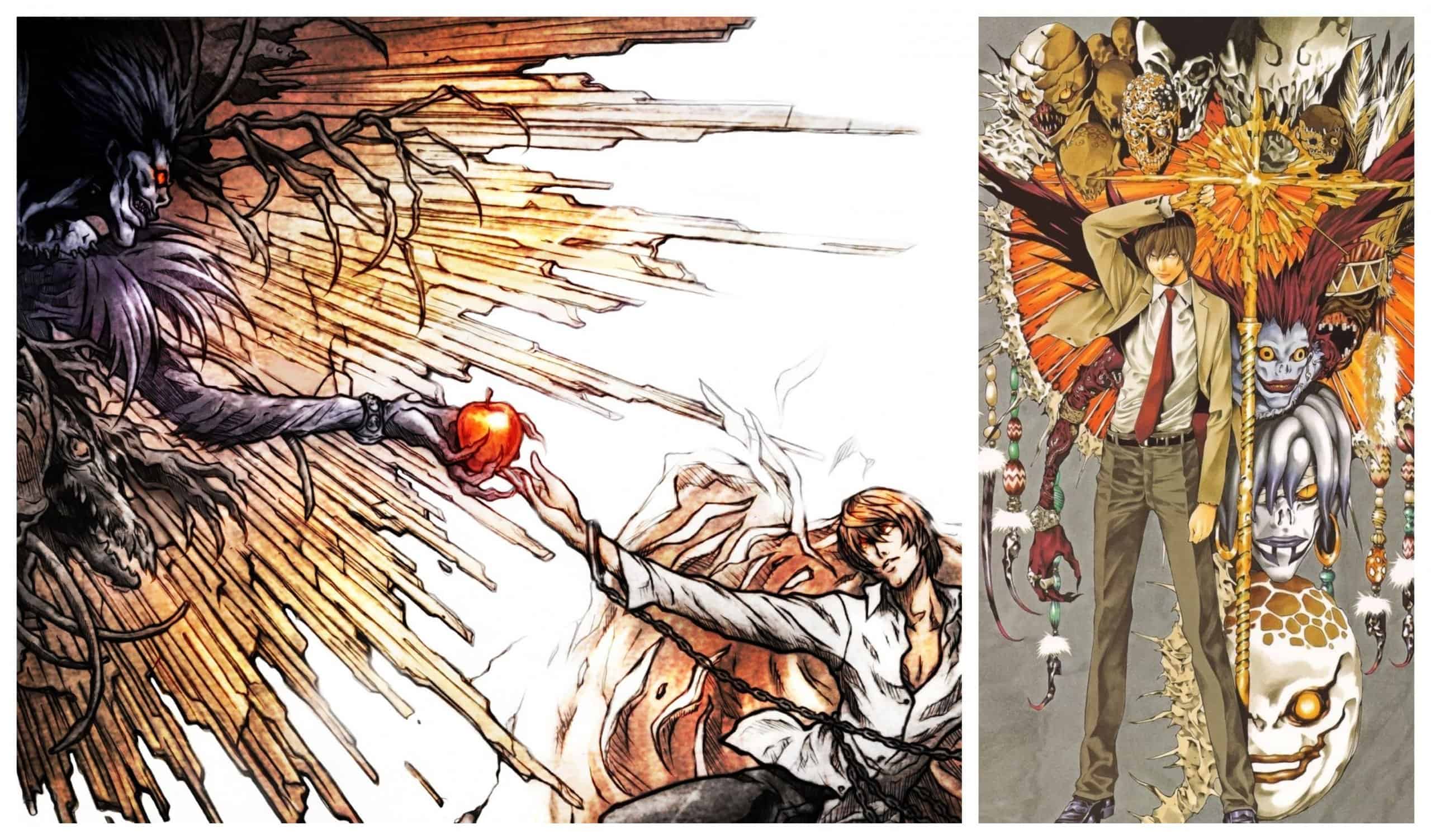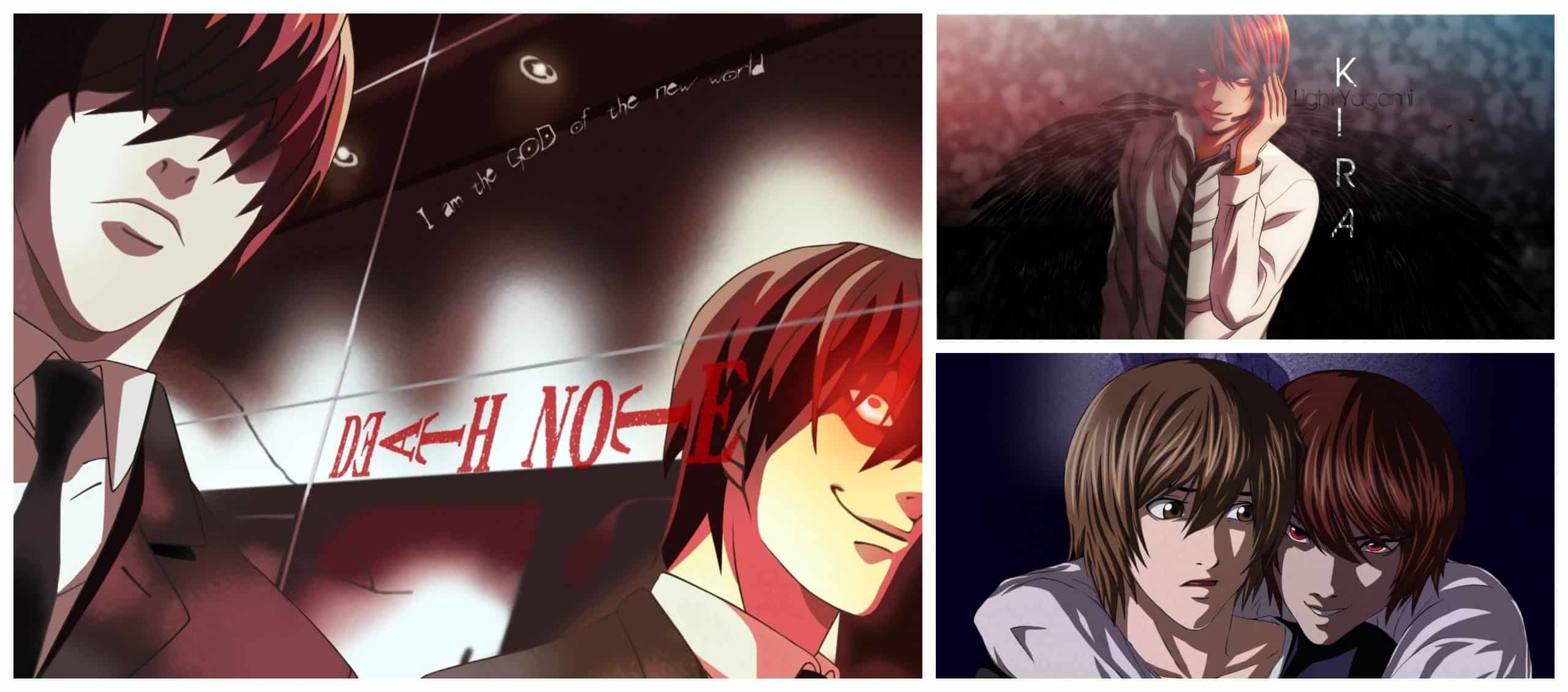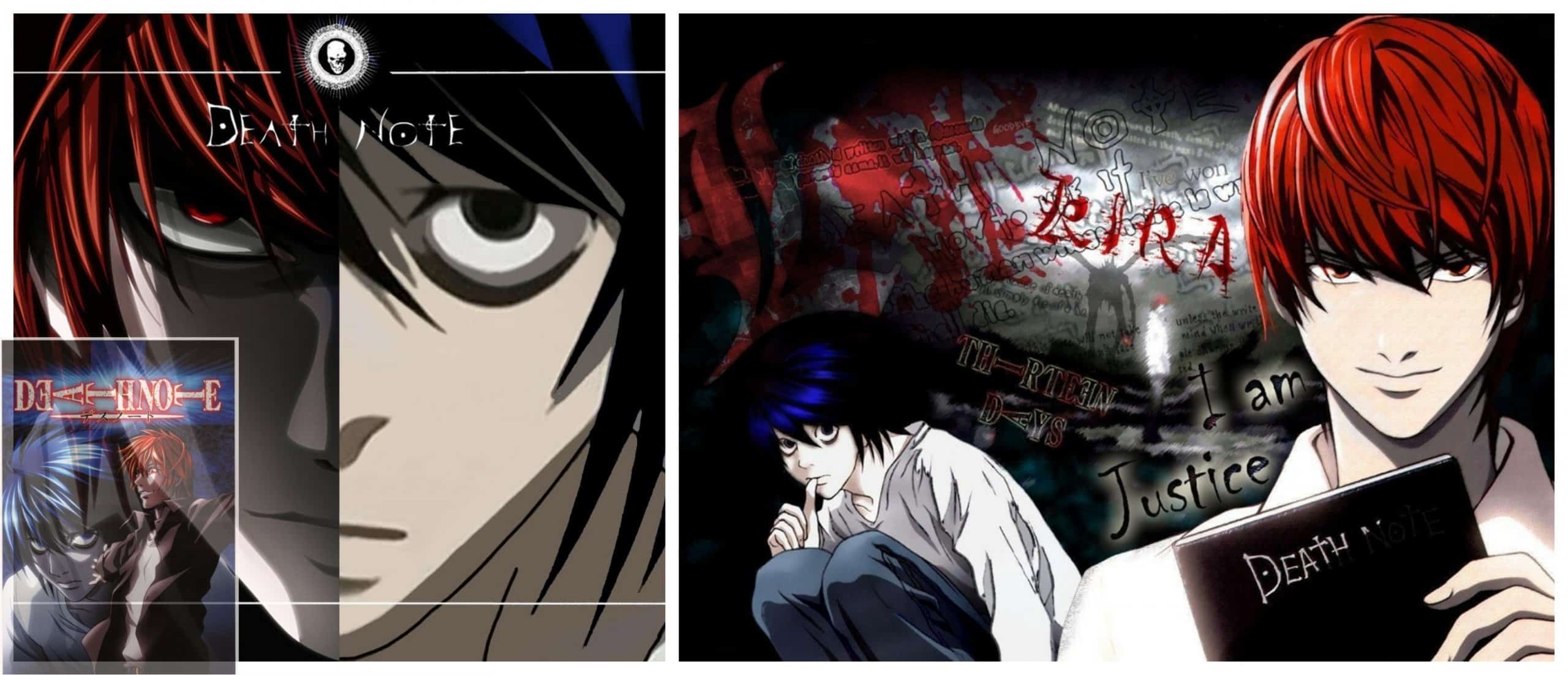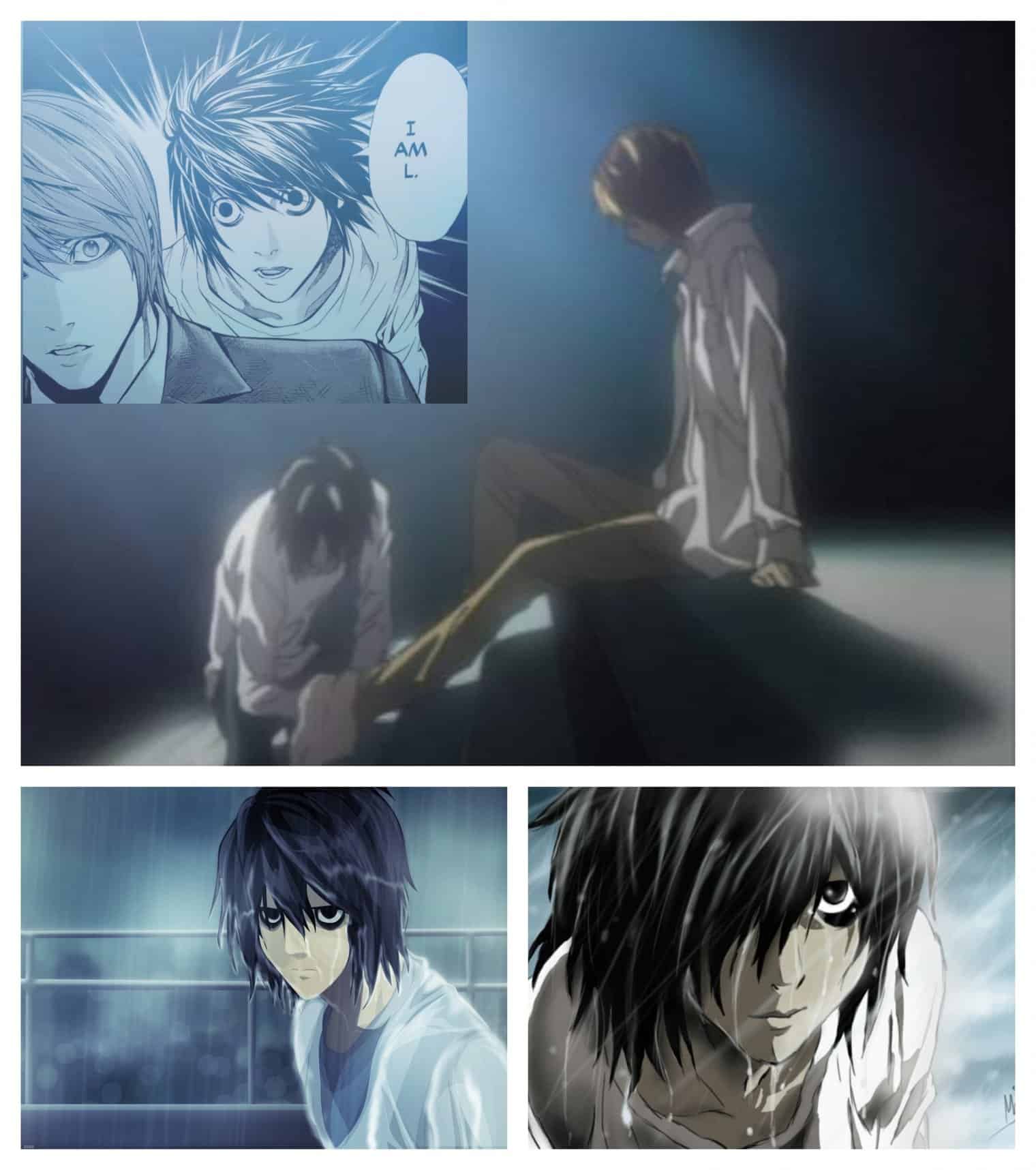Death Note: Light vs L
Thoughts, meaning and references of the new God: Light Yagami
The Death Note Analysis of ’20s.
This article is dedicated to one of the most famous anime of recent times: Death Note. Inspection of the first 25 episodes which literally stick the spectator to the screen. The battle of intelligence is also a fight for principles. On one side, the God-like figure of Kira on the other, the genial of L in a breathless sequence of twists. I think there’s nothing more to add, enjoy the reading of our death note analysis!
Don’t forget, a second article completes the analysis of the whole anime series focusing more on the topics not covered by this first contribution!
Where everything begins: the Shinigami Realm.
Most of the scenes of Death Note are soaked in symbolism, in particular of Christians references. Christianity, as well-established belief in the West continent has a spellbound effect on Japanese audience and here explained the choice of holy signs (in a very similar way of which happens in Neon Genesis Evangelion). Despite these allusive references, the Death Note world is not conceived as the Bible prescribes: humanity is watched by the Shinigami who do not care for people. On the contrary, they substract life to humans in order to extend theirs. The first assumption which gave birth to the plot is boredom. Ryuk is bored by its own living and also Light feels compelled to find out something to do in order to find a way out from his tedious life.
As we notice, the initial motive arises from a negative perception that may resemble the Adam and Eve (Bible’s mythic history). The Death Note is dropped to the human world; due to the flimsy condition of humanity which is not able to resist the vice, the Death Note is readily taken and used.
The blindness of Power.
Light Yagami, the model of the perfect student becomes obsessed by the power of the Death Note. The corruption of the souls is one of the main tipics of the series and it will be further discussed in the L vs Kira section. The actions of Light which at first glance may seem very thought are every time outwitted by L’s moves.
The Kanto-broadcast trap.
It’s the very first step where Light shows that his action are not well considered. He kills Lindl. L. Taylor who pretends to be L. That’s the initial spark in which Light feels as challeged by someone: but because a God cannot be discussed (such he considers himself) he has to punish L in an exemplary manner. We see that from the beginning, Light turns into Kira: he’s ready to kill innocent people to impose his rule.
The challenge: time kill schedule and Raye Penber’s murder.
The special power bestowed to Light pushes him to take dangerous risks. He decides to change the killing schedule after L hypothesizes the culprit may be a student and then he takes direct action by killing the FBI inspector Raye Penber. A fact that has a lot of aftereffects and put Kira to the edge: the true will of Light Yagami is not make the world a better place but he only what to force his justice to the world and to reach the goal ha needs to get rid of L. To reach the results he is ready to expose himself: Raye would not have any proofs of a boy who kills only by writing down names.
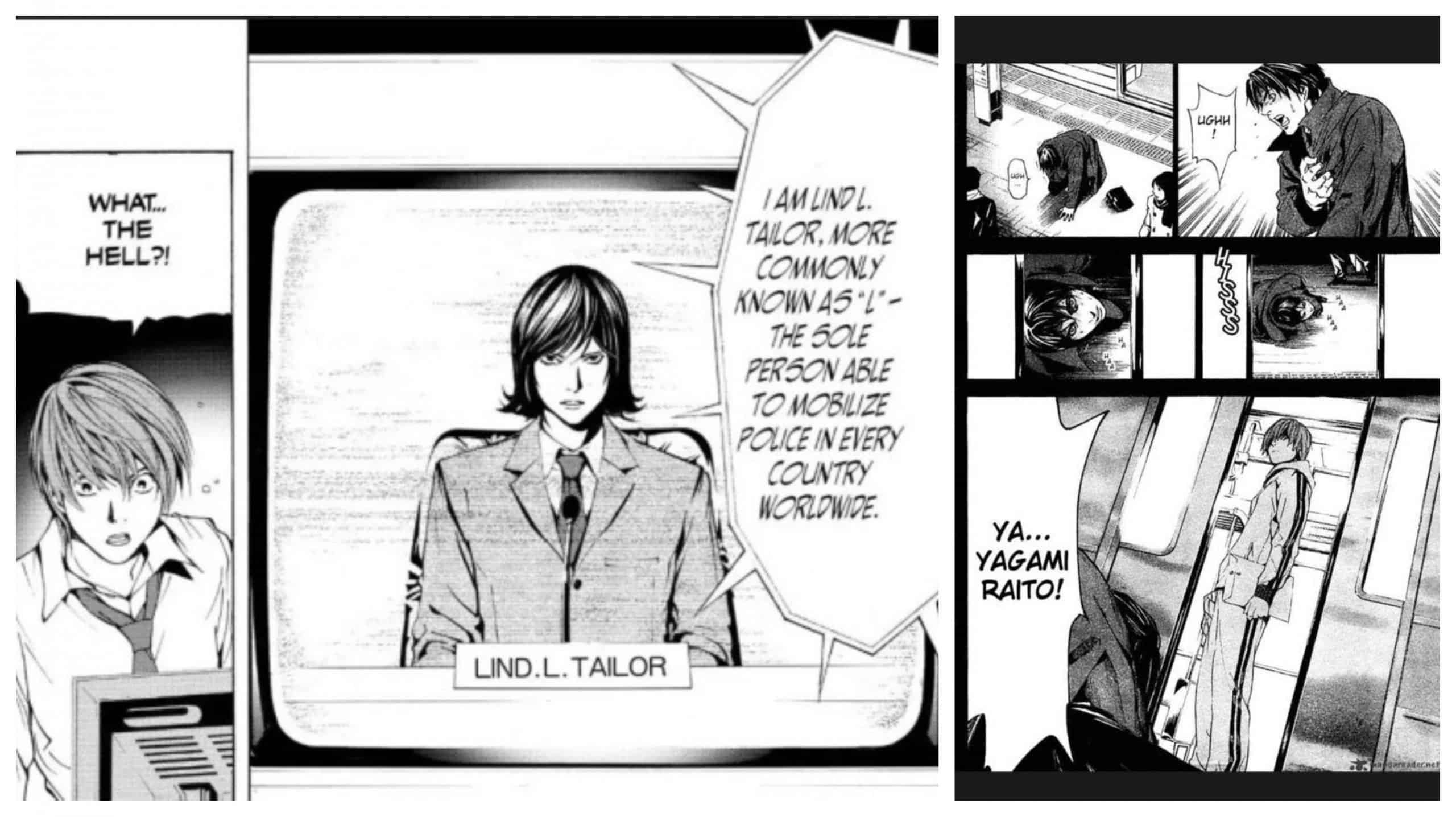 Contact.
Contact.
Do you remember the following move of L? He decides to confront directly with Light at the To-Oh entrance exams. The brilliant detective confesses his true identity immediately. The tennis match is a metaphor for the mind battle between Kira and L; it prefigures the final outcome of thier chess play. From this point, a sequence of events are highlighted in the anime: justice becomes a secondary aspect and the most important becomes the one to one fight involving Light and Ryuzaki.
The spread of foolish: Misa Amane. The second Kira.
The distorted view of Kira finds the first supporters. Among these there’s the girl who was saved by the sacrifice of a shinigami: Misa Amane. This character is the criticism of appearances: Misa after the death of her parents is psychologically devastated at the point that she lies to herself embracing the principles of Kira. She becomes the dummy of Kira and she receive a false love in exchange. She’s so void to be treated as a disposable good by his master, Kira. It’s not a case that Amane becomes an Idol: the symbol for the merchandise becomes herself a thing to be sold. To follow Kira’s orders she renounce to half of her life for two times!
This behaviour gives us the opportunity to underline the fact that are not the numbers of followers to make a principle “right” because also the supporters may be in a not-stable, not-ready to judge state of mind.
In particular, the complex of Omnipotence has the resonance to influence and destabilize people. Misa Amane and Teru Mikami feel attracted by the divine connotation of Kira. Here we come with Light Yagami. As you probably know, his name Light it has not been chosen by chance. When he got the Death Note, his intimate willing of enlight the world with his new principles takes over. His arrogance is the common denominator for his actions which are deeply influenced by two mind states:
- The complex of the Messiah: it’s related to the belief he has about the world’s necessity of a new God. He believes he has been chosen as the one to take all the burden. The one who has to light up the world.
- The complex of God: it’s slightly different from the previous since the power the Death Note gives him authorizes Yagami to act as a God. His personal corruption has a parallelism with Lucifer. Thy both share the decay from the best (student in the case of Light, Angel for Lucifer) to hubris.
Light Yagami is so involved that he becomes Kira: an entity that also himself (unaware of the Death Note’s sin) would condemn and capture. The allusion of Kira to killer is the simplest one but also here we can dig a little more. However, it would be a mistake blaming the Death Note for the whole events: the evil is already in Light and the notebook is simply the temptation fruit, the “malum” (literally the “apple” and the “evil” from latin) that frees Yagami’s true intentions. Light is the faust who has accepted to get rid of his soul.
Here we bring a literature’s citation, a true pearl. Kira borns from Kiraa (“light“) the divinity of night. Moreover, Light is written as “Moon” (cit. Naomi Misora). The story of Light is closely influenced by the Metamorphosis of Apuleius. Yagami is the “curious” Lucius. In fact, the Golden Ass (another name to which reference the Metamorphosis) revolves around the protagonist’s curiosity (curiositas) and insatiable desire to see and practice magic. Light Yagami is the character who fall without redemption under the temptation of Evil. He becomes the Moon, the counterpart of the real justice, the Sun.
L vs Kira.
The battle between Ryuzaki and Light cannot be considered as only a clash of intelligences, it’s far beyond, it’s a collision of two moralities. On one side we have the psychology of a serial killer who self-proclaimed as a God. On the other side, L the exceptional detective who wants to capture Kira and bring him in front of the law.
Kira’s narrow victory despite the huge advantage.
In my opinion, on a strategical level, there’s no doubt about who is the best. It’s L, definitely. Starting from a disadvantageous position he nearly catches Kira. Meanwhile Kira has great advantages on his side:
- He can count on a supernatural power (the death note), a power which does not respond to the everyday law of physics and then difficult to understand from the external.
- He uses as mere instruments Misa and Teru in order to baffle the investigations.
- He also has the shiningami Ryuk to which rely on and at the end he force Rem to the sacrifice.
The fact that Kira is not sly as L emerges also when a average detective such as Naomi Misora was extremely close to find out Kira’s true identity and she was stopped only by chance.
The suicide of Naomi Misora makes clear a huge difference between Kira and L: Kira’s actions are aimed to firstly protect himself. His arrogance makes him unable to understand the other people, even its relatives. L, converserly takes all the choice trying not to put in danger human life. The opposite behaviour of the character derives from their concept of morality.
The morality of Light is not predifined truth and according to utilitaristic view is established by the experience. The concept of right does not exist on its own but it depends on the circumstances and the experience. The Justice for Light and his supporters is a matter of fact and in someway related to the subjective feelings of the people. In this vision, Kira’s actions are Justice based on his own view. According to this philosophy morality (Hume) is founded on the current law which are the outcomes of the actual society. The impulsive side of Light is reported with red tinges, a message for the spilled blood. We remind that Kira agrees with the idea of his right-hand man Teru to kill also the lazy and non productive citizens.
If Kira gets caught, he is evil. If Kira rules the world, he is justice.
– Light Yagami
Why the Death Note’s killing strategy does not work.
We try, here, to put down some reasons why the concept of Justice to whom Light aspires may not create a better society. The main 3 goals for Justice should be:
- Deterrent function: Justice (and then the laws) should prevent to do evil actions.
- Payback function: you have to pay for you illegal action.
- Understanding and grow-up process to rehabilitate the citizen into society.
The only point Kira focuses is the second one: he takes only the payback role of Justice and extremes, forces the concept imposing the death to ALL kind of actions that violate the law. The third point is absent if you institute the death penalty. Concerning the first point, as we see from Mello’s actions, criminality only adapts to the new system and more severe punishments do not always reduce illegal actions. In fact, if we could read in the criminal’s mind we’ll probably notice that he would not consider the eventuality of being caught since he believes from the beginning to get away.
The Justice for L is not an a posteriori (by experience) element. Kira has to be captured because he’s evil. L’s morality is an a priori concept, in someway a primitive intuition and it is not object of speculations. The strong foundation of the morality in L is depicted with the blue colors in order to symbolize calm, rationality. The position of L is very close to the one of Kant. The topic of Justice is also covered in our Psycho-Pass reviews. The character that better personifies the kantian justice is probably Soichiro Yagami. He truly believes in law. Life and law require to be pursued because their RIGHT.
That biblic scene: L wipes Light’s feet.
According to us, that scene has to be investigated as the L’s acceptance of Kira’s victory. As Jesus washed Judas’ feet, also L wipes the one of the sinner Light. It’s a cinematographic way to underline the (false) God position reached by Kira. On the other side, L has appreciated the intellectual challenge with Light but in the raining scene where he hears the ringing bells he becomes aware that he cannot manage the supernatural advantage of Kira (who can count on Rem sacrifice).
In fact, we remind that the rain acquires a messianic hint, as water cleans up the sins of the sinners. In that scene, L Lawliet (his real name) farewells Light who will soon betray him.
Talking about the visual and audio compartments it’s useless to say their’re awesome. L’s theme is recorded in our heart and reproposed here. The complicated thoughts and reasonings of the characters are reported in an innovative way that both augment the intensity of the storytelling while remaining easy to catch to the audience. The following standing regard only the first part of the anime and in particular it referers to episodes from 1 to 25 (L’s death).
The peak of mastery is reached in the scene of the bag chips.
I’ll solve equations with my right hand and write names with my left. I’ll take a potato chip… and eat it!
-Light Yagami
A second article has been posted to complete the analysis and will cover the second part of the anime. The characters of Mello, Near and the Shiningami will be investigated more and a whole judgement of the anime series will be present.
Do you agree with our position about the first 25 episodes of Death Note? Did you enjoy the article? Write it in the comments!
Where to watch Death Note anime: Death Note streaming.
Death Note is a remarcable anime series which every anime fan should watch. You can find the streaming of Death Note in the following platforms if you’re US or UK based: Netflix and Crunchyroll.
On the other hand, if you’re an Italian visitor, you can find the Death Note streaming for free on VVVID or Anime Unity. Death Note is available in both italian dub or italian sub.


